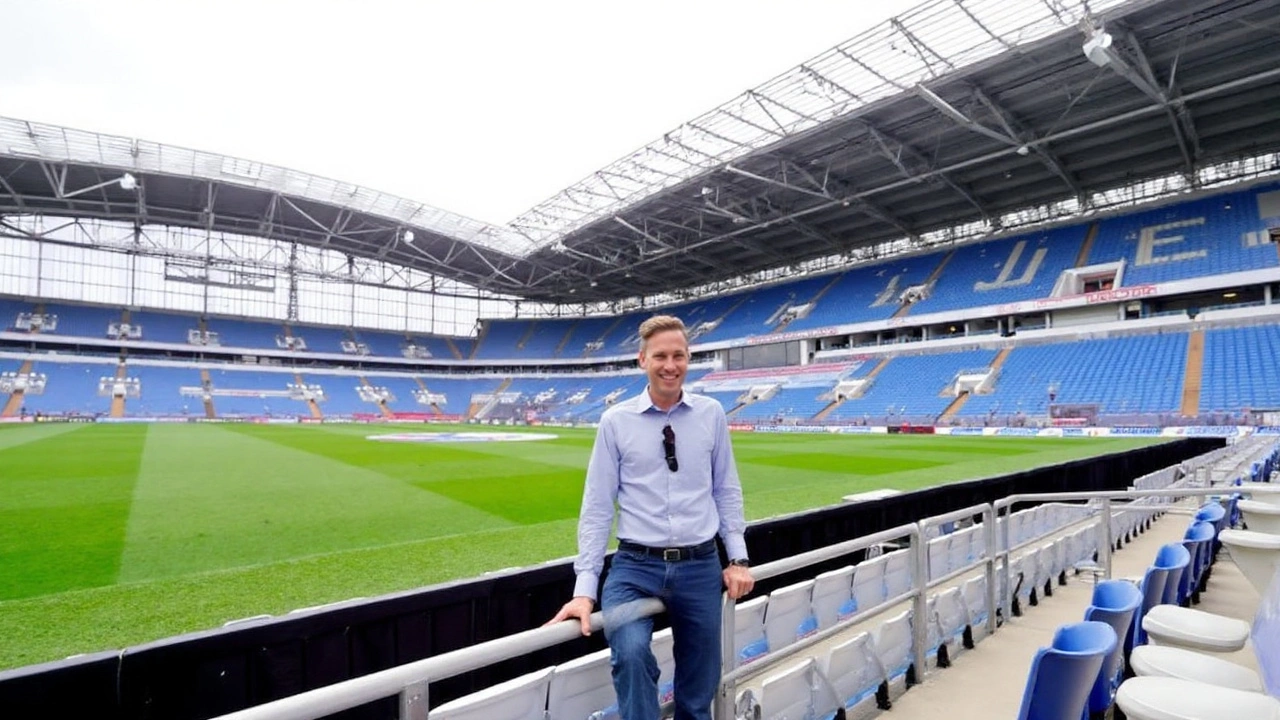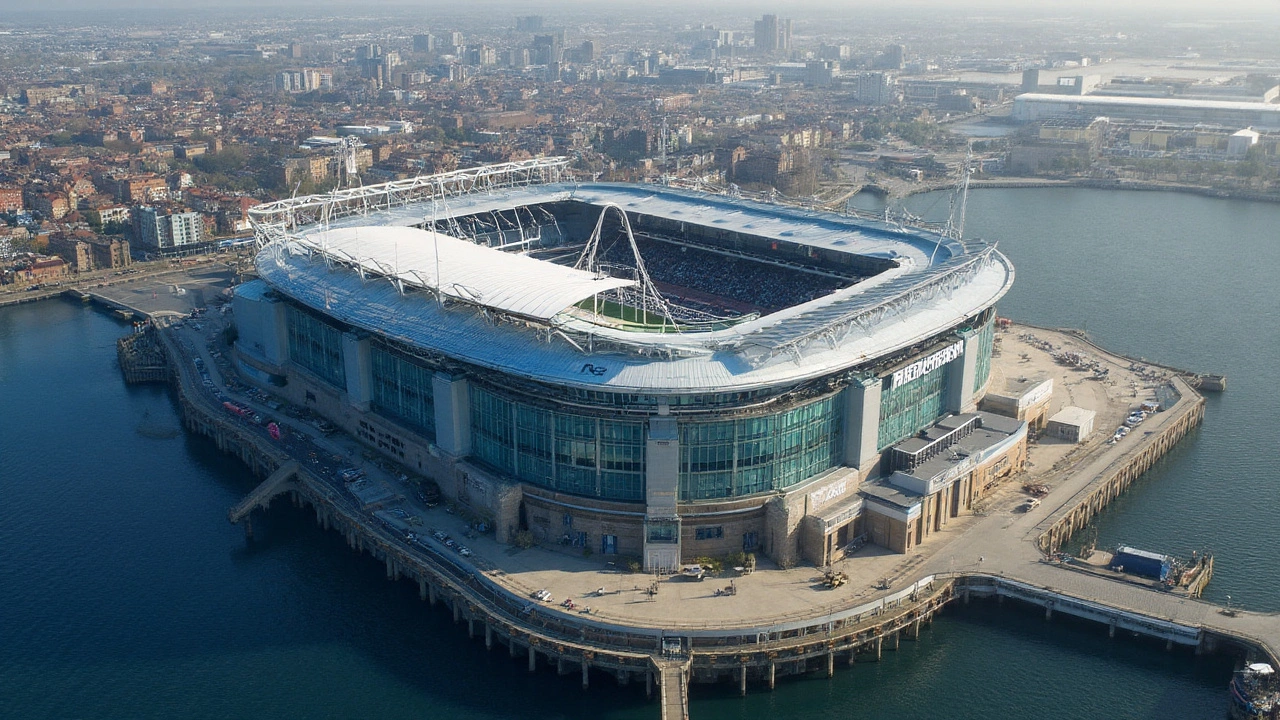
A stadium move built to change the club’s trajectory
Moving out of Goodison Park isn’t just a change of address. It’s the end of an era and the start of a very different future. With Hill Dickinson Stadium, the club is betting that a modern matchday—bigger revenues, smarter facilities, and a stronger pull for players—can be the engine that lifts performance on the pitch. The message from the top is blunt: this building is the plan, not a backdrop to it.
That intent has been fronted by Angus Kinnear, who arrives in the Northwest after eight years steering Leeds United’s commercial growth. He is now leading the switch with an eye on the immediate football upside. As he puts it, there’s no clearer signal to players, staff, and partners than the sightlines, the spaces, and the energy a new home can deliver. The stadium, he says, is a recruitment tool, a revenue base, and a rallying point—all at once.
On paper, this is a multi-use arena designed to hum all week, not just on matchday. In practice, it needs to do something trickier: carry the spirit of Goodison across the city. The design brief has leaned into that. Tight stands. Close proximity to the pitch. Noise encouraged rather than dampened. The goal is simple—keep the edge, add comfort, and scale it for the modern game.
Kinnear has been clear about the bar they’ve set. The club wants supporters to feel that the Goodison magic has been lifted, amplified, and dropped into a space that works better from the first turnstile to the last whistle. That’s a high-wire act. It’s also the point of the whole move.
There’s another angle that matters: stability. Matchday income is one of the few revenue lines clubs can build themselves. Broadcasting deals are negotiated elsewhere. Transfer markets are volatile. Stadium revenue—tickets, hospitality, food and drink, event hire—can be planned, marketed, and grown. The Hill Dickinson project is built to press every one of those levers.

From Goodison’s roar to a new matchday engine
The design sets out to broaden choice without losing identity. The club has mapped out a full spectrum of experiences—from affordable general admission to high-spec hospitality—so fans can pick what fits them. That choice is meant to underpin a key promise: keep standard tickets accessible while premium seats carry more of the economic weight.
Goodison Park had roughly 1,000 premium spaces. Hill Dickinson Stadium is jumping to more than 5,500. That’s a structural change. It takes pressure off general admission pricing and gives the commercial team more to sell, more often, and at higher yields. It also opens the door for businesses that want to host clients, families who want one-off upgrades, and visitors drawn by the matchday theatre.
What does that look like in real terms? The club has outlined a hospitality mix that borrows the best ideas from modern stadiums and tweaks them for local character. Some of it is big and bold; some of it is intentionally familiar.
- UK-first “loge” style premium enclosures, developed with Seat Unique, featuring reclining cinema-style seats and private TV monitors for replays and highlights.
- A players’ tunnel viewing experience, to bring supporters as close as it gets to the pre-kickoff buzz and the walk to the pitch.
- Village Street in the West Stand: a social spine with a large open bar, a sports bar, and two traditional pubs—The Queen’s Head and The Prince Rupert—designed to feel like a matchday neighborhood within the stadium.
- A food and drink lineup that ranges from high-end dining to street food, with cues taken from successful venues around the world, adapted for local tastes.
- A year-round 17,000-capacity Fan Plaza for pre- and post-match gatherings, events, and cultural programming when there’s no game on.
Each of these elements feeds the same goals: better atmosphere, smoother crowd flow, and more reasons to arrive early and stay late. The tunnel view hooks the diehards who live for the small details. The loge boxes serve groups who want comfort without isolating themselves from the noise. Village Street gives people a place to meet without leaving the ground. The Fan Plaza extends the matchday into a full day out.
There’s a cultural job to do too. Goodison’s edge came from proximity and pressure—the sense that players were performing in the middle of a neighborhood, not a sealed arena. The new design leans on that psychology. Stands are tight to the pitch. The acoustics are tuned to trap and bounce sound. The club is also looking at how singing sections, family areas, and social spaces can be arranged so the noise builds in waves rather than in pockets.
For supporters, price and access will be the test. The club’s model is straightforward: expand premium to pay for ambition, keep general admission within reach, and layer new experiences in between. If the math holds, you get a livelier stadium and a broader, more stable revenue base without pushing out the core support.
That revenue matters beyond the balance sheet. It influences football decisions. More matchday income strengthens the case for squad investment and squad retention. Kinnear has been candid about using the stadium as a lever in recruitment conversations. Players respond to scale, to noise, to facilities. When they walk the site, see the tunnel, and feel the place, the argument for joining—or staying—lands differently.
To make all this stick, the transition has to be managed with care. Supporters will want clarity on seat moves, season ticket arrangements, travel plans, and the farewell to Goodison. Expect staged communications, seat mapping, and guidance on new routines—not just how to get in and out, but where to go, where to meet, and how to make the most of the new setup. The club knows the first season will set the tone for the next decade.
Events outside football will carry their share of the load. A modern stadium can host everything from smaller business functions to large-scale cultural events, and the design has been pitched to handle both ends of that range. The advantage is obvious: steady income streams in midweek and off-season, plus global visibility for the brand when the venue hosts marquee dates.
Then there’s the neighborhood effect. A busier waterfront (or dockside) footprint draws footfall for local businesses, creates jobs in operations and hospitality, and gives the city another anchor for big-event planning. The Fan Plaza is a key plank of that strategy—program it well and you have a civic space that earns its keep even when there’s no game on.
None of this erases the emotion of leaving Goodison Park. That ground has carried generations of stories and a style of football culture you can’t bottle. The club’s leadership is framing the move not as a goodbye to that identity, but as a way to scale it. The test is whether supporters step inside Hill Dickinson Stadium and feel that same knot in the stomach before kickoff—the feeling that something real is about to happen.
The stakes are high. Get the pricing wrong and you lose trust. Muffle the sound and the place goes flat. Miss on transport and you shred the matchday rhythm. But get the details right and the club changes gear. The venue becomes part of the football operation, not just the background to it.
For now, the emphasis is on delivery: finishing the build, bedding in operations, and mapping the fan journey from turnstile to seat to post-match. Kinnear’s early messaging is consistent: the stadium is a statement of intent and a practical tool to make the squad “better and stronger.” It’s a sales pitch to players, yes, but also a promise to supporters.
And that’s the crux. This isn’t only about steel and concrete. It’s about what those stands can do when they’re full. If Hill Dickinson Stadium captures the bite and belief that defined Goodison, and layers it with comfort and choice, then the move will feel less like a departure and more like a handoff. The club gets room to grow. The city gets a new stage. And Everton gets a platform that fits its ambitions.




